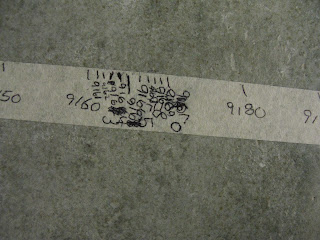Yet, when presented with a number line, BatBoy can find the midway point between 7600 and 7700, and then deduce that 7651 is, in fact, closer to 7700. But we need to draw this diagram over and over again.
On the one hand, this repetition indicates that BatBoy is not quite ready to absorb the explanation behind how we round numbers. On the other hand, it also indicates that he needs to build intuition through experience with numbers and their relationships with one another. Number lines are great for exploring number relationships.
One of the fantastic things about number lines is that they zoom. People don't use that to good effect. People who get that the number line scales assume that everyone else sees it the same way, but I find that many students still want to mark every number line by ones, regardless of the problem they want to solve with it.
 |
| We can take the number line that we are used to seeing, from 0 to 10 ... |
 |
| and shrink it down to fit into a piece from another number line ... |
 |
| ... or expand it out so that we can zoom into fractions, percents, decimals, or irrational numbers. |
We used masking tape to create several number lines of varying scales side by side across our kitchen area. Then I asked BatBoy and SpiderGirl to use them to find some midpoints, add or subtract along the number lines, walk along them by 1's, 2's, 10's, or 1/2's. Then we left them there for exploration and play at leisure. The lines are easy to clean around; I sweep right over them. The kids bear-walk along them or lay on their tummies to look at them. Mostly, the lines are simply there, a visual cue to the brain that this tool is useful and important, and a reminder how it may be used.


No comments:
Post a Comment